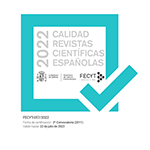Morphology of the invasive 'Carpobrotus' (Aizoaceae) in Europe: Malta as a case study
Abstract
Since the late 19th century, different taxonomic views have been reported for Carpobrotus species occurring in the Maltese Islands, where the latest treatments imply two varieties of C. edulis and the doubtful occurrence of C. acinaciformis. Taxonomic inconsistencies are possibly derived from the poor understanding or misinterpretation of morphological characters. Moreover, the hybridogenous morphotypes resulting from horticultural advances make the determination of Carpobrotus even harder, especially with the application of outdated identification keys which do not take hybrids into account. The difficulty in determining Carpobrotus spp. has been expressed in several recent accounts within the Mediterranean region. A taxonomic investigation was carried out by applying eleven morphological characters adopted from recent monographs on 25 populations present in Malta. Three taxonomic units have been retrieved from the analyzed sample, where C. acinaciformis s.l. has been confirmed to represent all the purple-flowering populations and C. edulis s.s. for the yellow-flowering ones. Emphasis was given on the interpretation and understanding of distinctive morphological characters by employing a standardized method of assessment aided by images. This comparative morphological study resulted in a new characteristic in the leaves of C. edulis, by which it could be easily distinguished from C. acinaciformis in the vegetative state. A detailed discussion about the two different morphotypes of C. acinaciformis s.l. and dichotomous keys to distinguish Carpobrotus taxa are also provided.
Downloads
Article download
License
Mediterranean Botany is an open access journal to promote global exchange knowledge. It facilitates unrestricted access to its contents from the moment of publication in its electronic edition. The originals published are property of the Universidad Complutense and it is mandatory to cite such source in case of total or partial reproduction. All contents are distributed under a Creative Commons License 4.0 (CC BY 4.0). This circumstance must be expressly stated in this way when necessary. You can check the informative version and legal text of the license.














